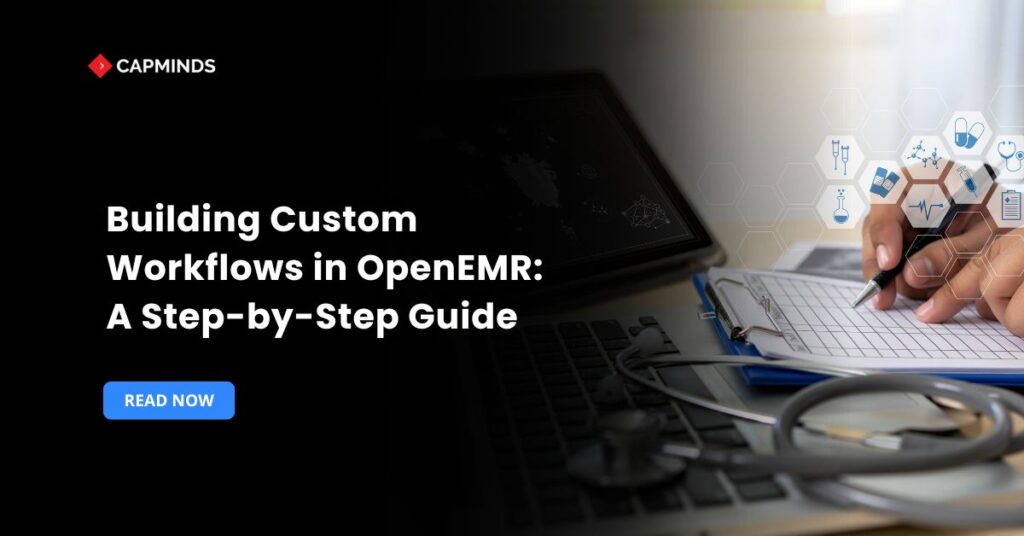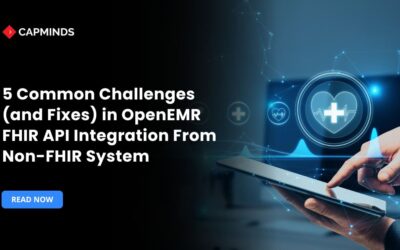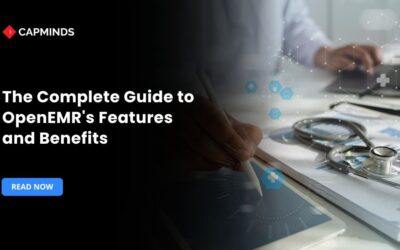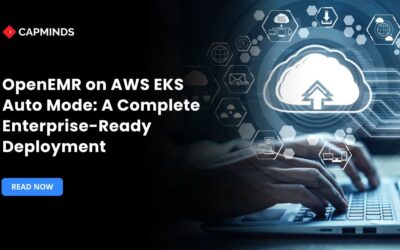Building Custom Workflows in OpenEMR: A Step-by-Step Guide
Healthcare practices are expanding and have started adapting technologies to their operational requirements. While EHR systems like OpenEMR provide essential capabilities, it’s important to customize workflows to fit your practice’s specific needs, such as a tailored intake form, automatic referral notification, or shortened billing queue.
OpenEMR is a highly adaptable, open-source EHR platform. While it comes with default processes, each clinic frequently has unique operating requirements that necessitate custom workflows.
In this blog, you’ll learn how to adapt the usual patient encounter workflow and create unique modules, forms, and events while maintaining basic functionality. This method guarantees easy updates and long-term maintainability.
Why Customize OpenEMR for your Workflows?
While OpenEMR includes clinical, administrative, and billing modules, each practice has its unique aspects.
- Specialty-Specific Data – Dental practices may require tooth-charting forms, while mental-health clinics may require standardized depression screenings.
- Internal Processes – You may need several levels of approval for lab orders or an automated review queue for coders.
- Patient Engagement – To boost patient engagement, consider using custom intake surveys, trigger-based reminders, or follow-up alerts.
- Reporting – Customize data gathering to fulfill state-specific reporting requirements or value-based care criteria.
Custom workflows bridge the gap between basic EHR capability and your operating model, resulting in more consistency, fewer mistakes, and faster turnaround for important operations.
Plan Your Custom Workflow
Before going into settings and coding, spend some time planning.
1. Goals and Metrics
- What pain points are you addressing?
- How will you assess success (e.g., reduced form completion time, fewer missing data fields)?
2. Stakeholders and Roles
- Who will utilize the workflow? Are you a clinician, front-desk, billing, or lab staff?
- What permissions and access levels are required?
3. Current vs Future State
- Document your current procedure step by step.
- Create a map of your future process, including additional phases, automated activities, and handoffs.
4. Technical Constraints
- Hosting configuration, PHP/MySQL versions, and existing modifications.
- Integration points such as labs, referrals, patient portals, and data exchange formats.
The Standard Workflow of OpenEMR
Before you can start modifying, you need to first grasp OpenEMR‘s general patient process. Standard flow includes:
- Receptionists create appointments
- Patient registration and room assignment
- Clinical staff conduct interviews and histories.
- Examination, treatment, and documentation by the provider.
- Billing and checkout by the billing staff
Each step moves through statuses such as “Arrived,” “Chart Pulled,” “Coding Done,” and “Checked Out.” These status notifications can be adjusted to match your clinic’s procedures.
Related: OpenEMR vs. Paid EHRs: Cost, Features, and Customization Compared
Map Your Clinic’s Workflow
Begin by creating a schematic of your clinic’s particular workflow.
- A level 1 triage nurse collects vitals.
- A medical assistant administered a level 2 pre-exam.
- A physician conducted a level 3 exam.
- Level 4 Billing and Checkout
Define triggers, such as completing a vitals form, that move patients to the next stage. Having a process map makes customization easier.
Customizing Appointment Statuses and Flow Boards
The Flow Board in OpenEMR displays patient progress based on appointment statuses. Customize statuses under the Administration → Lists → lists menu.
- Include clinic-specific statuses such as “Vitals Taken,” “PA Exam Done,” and “Physician Exam.”
- Customize colors and room operations through Calendar → Globals → Appointment Settings.
- Staff may now update statuses like a triage nurse can set “Vitals Taken” after a case is completed, prompting the following stage.
Custom Forms With Layout-Based
- Clone or construct new forms, such as the Vitals Collection Form.
- Add crucial fields and establish them as dropdowns with controlled value lists.
- To use conditional dropdowns, navigate to Forms → Lists and update field attributes. For example, pick a “Region” to see “City” alternatives.
Forms can be assigned to specific roles or encounter types, and they display in the clinician menu during an interaction.
Automating Workflow Transitions
Instead of manual Flow Board changes, use the Events system.
- When a form is saved, trigger Events to automatically update the appointment status.
- In a module, you may reference appropriate hooks or send custom events using PHP.
- The vitals form is submitted, and the status is changed to “PA Exam Pending.”
To keep workflows upgradeable, use the current Events framework rather than directly modifying core files.
Building Custom Modules
Use the “module skeleton” structure to build a custom module for more complex processes.
- Directory structure: sql/, templates/, language/, logic/, and possibly tests/.
- Use SQL to construct tracking tables.
- Create Smarty templates for form interfaces.
- Add PHP code to controller.php to manage submissions and automate triggers.
Keep business logic in this module and avoid disturbing the core, so that clean upgrades are feasible.
Using Events to Hook Into Core
To interface with OpenEMR processes without major changes.
- Use Events to perform activities such as form save, status change, and checkout.
- Hook onto the patient_encounter.save the event in the module to set the status to auto-advance.
- If a requested hook does not exist, post a pull request. Contributions are appreciated.
Sign-Off and Role-Based Progression
- For forms that are signed one after the other and locked at each stage, use an electronic signature.
- Integrate OpenEMR’s signature system, approval logic into your module.
- When a form is prepared for review, use Events to alert the subsequent role.
This offers safe, auditable procedures while preserving modular integrity.
Testing and Iteration
After configuration:
- Test the workflow on a sample of patients.
- Check status transitions, auto-form assignments, and billing triggers.
- Modify alerts, forms, transitions, and statuses in response to team feedback.
- Using a development/test server avoids production problems.
Documentation & Training
- Document each workflow step, including statuses, triggers, and roles.
- Provide staff training for receptionists, triage nurses, providers, and billers.
- Highlight module functions such as “Vitals Submission Auto-Advances to PA Exam.”
- Clear documentation promotes simple adoption and future maintenance.
Maintenance & Upgrades
- Avoid core changes by relying on modules and events.
- Monitor hooks and verify that modules react appropriately following core upgrades.
- Submit improvements and participate in the OpenEMR community by sharing module upgrades.
- Community contributions help to grow OpenEMR and benefit all users.
Related: Scaling OpenEMR for Multi-State Health Systems: Architecture, Compliance, and Customization Guide
CapMinds OpenEMR Customization and Integration Service
CapMinds OpenEMR equips clinicians with the best features and ways to integrate. It makes their workflows more efficient and filtered.
The integrated features will allow them to combine the ability of patient record management with conceptual and concurrent reminders.
This enhances the process of decision-making and improves patient care and quality.
- At CapMinds, OpenEMR custom solutions are developed with much care and accuracy to match the special practice needs.
- It will be low-cost and the perfect budget solution for your practice’s long-term future.
- CapMinds OpenEMR prioritizes secure data management & ensures compliance with industry regulations, offering healthcare providers peace of mind.
Get the best technologies and HIPAA-compliant and efficient OpenEMR from CapMinds that can be tailored to fit your practice.
Our OpenEMR services facilitate a Modern User Interface (UI), customization, production support & training. It also facilitates billing, reporting, specialty enhancements, clearing house integrations, e-prescribing, cloud, and more.
“Get the most experienced, proven, and perfect professional support for your OpenEMR.”




